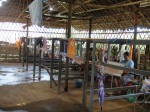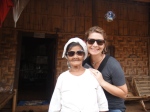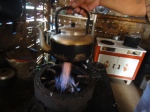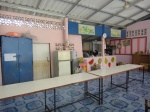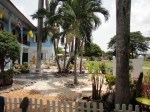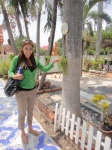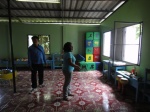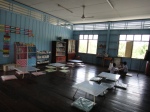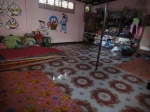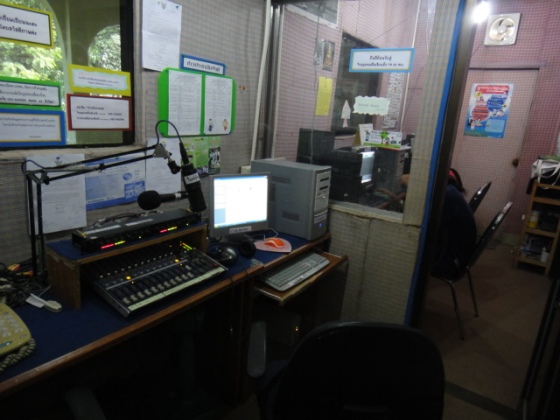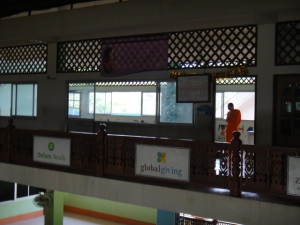On July 24, I accompanied Rachel House on a home visit to one of its patients – a 7-year-old boy who has leukemia and relapsed just before he was supposed to start the new school year.
After visiting Rachel House’s office to meet the staff and nurses, we were off to the young patient’s grandmother’s home where he and his mother stay. They stay here so that he can be closer to treatment and support. The mother and grandmother welcomed us with warm, sincere smiles. The patient had been improving until recently.
When we arrived, the nurse discussed the patient’s symptoms with the mom, brought him a new backpack since he was hoping to return to school, and consulted the mother on his oral chemotherapy. Because some families do not know how to access Indonesia’s free health care, the staff of Rachel house assists and guides them in the process from registration to accessing it. Families supported in this community are laborers, have no jobs, supported by their families, or ojek drivers (motorbike taxis). Palliative care is not well-known in the country, and people do not know what to do when their loved ones are sent home from the hospital to die. The families often don’t have emotional support, counseling, or even explanations on what will happen to the patient before he or she passes away. Rachel House was created to fill that need and support these families until the end.
As I observed Rachel House staff with the family they were not like outsiders stepping in to advise on the family’s lives, Rachel House was a part of the family – connecting on a personal level instead of via a chart. One of the nurses explained that this is why she joined Rachel House. She said that working in a hospital, one would feel a bit separated since the charts dictated everything. Here she can support the family on an emotional level and connect more.
After the visit, we parted with the family and the grandmother had tears. She said she was so happy to have the support of the nurses coming to their home. Her grandson was weak and could rest at home. Rachel House hopes to be able to provide this kind of support for other diseases in addition to cancer and HIV. Additionally, they hope to recruit new nurses while expanding awareness and understanding of palliative care in Indonesia. This is one of those organizations that remind me of why I began to work in the non-profit and foundation field. It is meeting needs that are not being met, and supporting those that have fallen through the cracks to improve the care and basic rights of humanity.
Learn more about and support the work of Rachel House here: http://www.globalgiving.org/projects/rachel-house-pediatric-hospice-in-indonesia-cancer-hiv/


 Burmese migrants’ children ready to learn thanks to Grassroots Human Rights Education And Development
Burmese migrants’ children ready to learn thanks to Grassroots Human Rights Education And Development




 Preschool Class
Preschool Class Aung Suu Kyi’s Birthday Celebration
Aung Suu Kyi’s Birthday Celebration






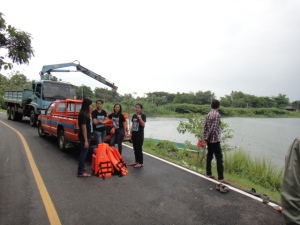
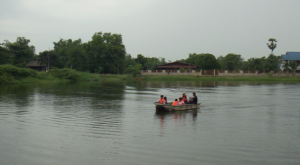

 See the water line on the second floor…
See the water line on the second floor…











